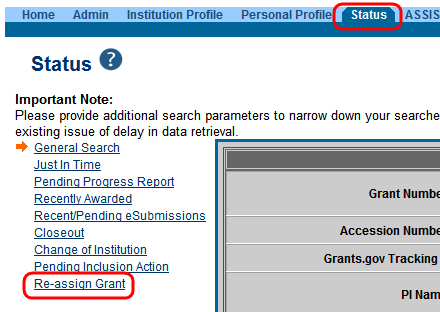For decades, NIH has collected and curated information on the schools and departments associated with the grants awarded to domestic higher education academic institutions to provide statistics on the fields contributing to advances in biomedical research. This information appears in NIH RePORTER (Figure 1), NIH Awards by Location and Organization, and other reports issued by NIH. To facilitate uniform reporting, NIH aligns the schools and department names used by institutions to standard lists of school types and department types.
Signing officials can ensure the accuracy of their institution’s assignment through tools in the eRA Commons (Figure 2). They can also edit this information for awards themselves or request manual corrections through the eRA Service Desk. To help facilitate review by signing officials, we send annual reminders towards the end of each fiscal year, such as this Guide Notice from 2020, reminding our recipients verify the accuracy of the grant assignments.

NIH uses automated procedures to propose a school and department assignment based on information from the SF424 (R&R) grant application. The Division field is used to determine a school or major component (e.g. School of Public Health) and the Department field is used to determine the academic department.

Our systems follow this order of operations when making school and department assignments:
- Machine-learning approaches using text provided in the application and matched to past assignments by NIH and signing officials
- Free-text information from the Division field, as matched to schools and other major components of the institution, and similar information from the Department field matched to a suggested department at the institution.
- For competing continuation grant applications (Type 2), the assignments from an earlier version of the award may be carried forward to the new application if the principal investigator and institution are unchanged.
- Recent applications and awards from the same principal investigator and institution where the information was available or updated by the signing official.
- Other information on departments or school names mentioned in address fields.
If no information is available, NIH assigns either “UNIVERSITY WIDE” or “NONE” for the major component or department, respectively. Finally, the specific institution’s schools and departments are rolled up into standard reporting categories of school types and department types.




0 Comments